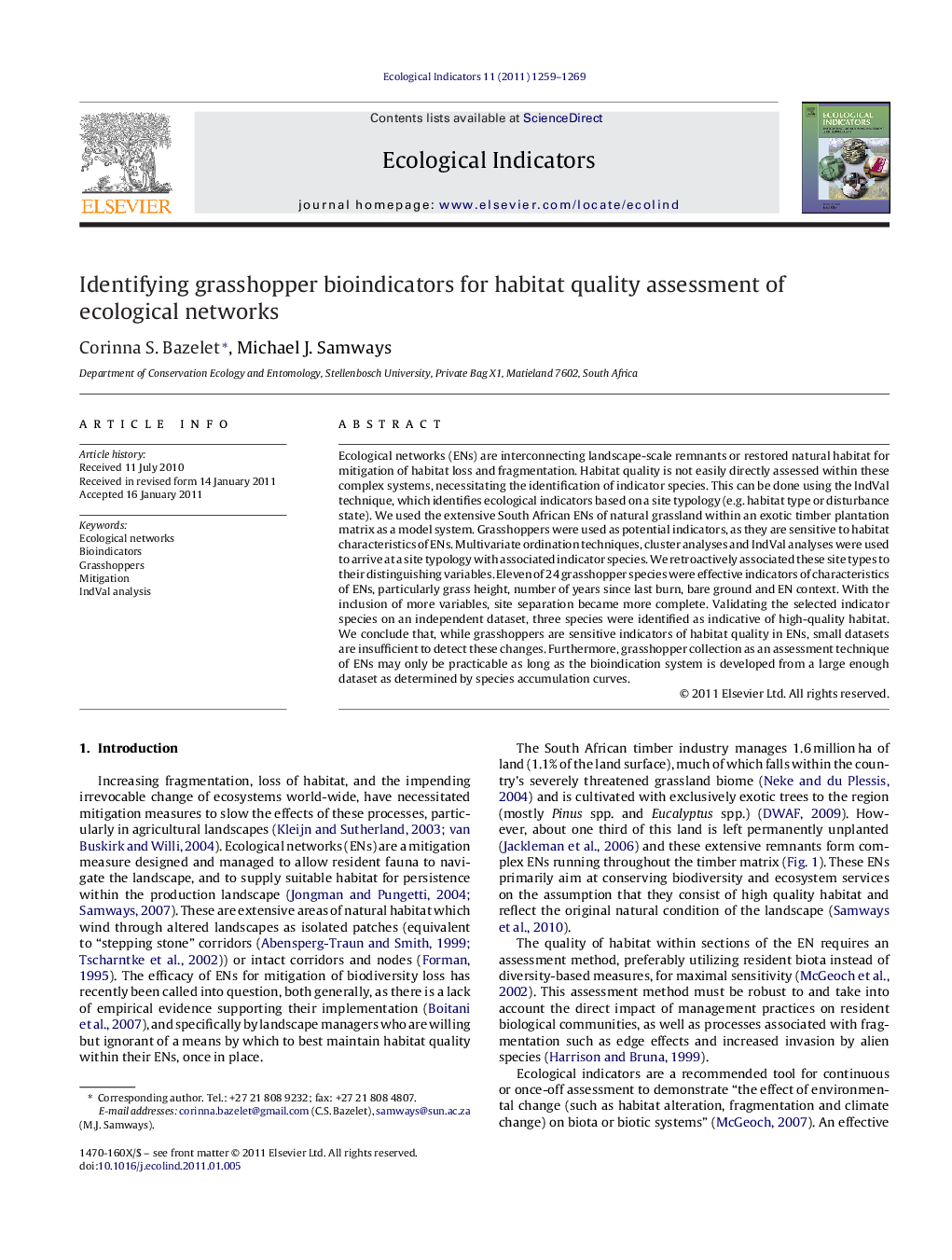| Article ID | Journal | Published Year | Pages | File Type |
|---|---|---|---|---|
| 4374062 | Ecological Indicators | 2011 | 11 Pages |
Ecological networks (ENs) are interconnecting landscape-scale remnants or restored natural habitat for mitigation of habitat loss and fragmentation. Habitat quality is not easily directly assessed within these complex systems, necessitating the identification of indicator species. This can be done using the IndVal technique, which identifies ecological indicators based on a site typology (e.g. habitat type or disturbance state). We used the extensive South African ENs of natural grassland within an exotic timber plantation matrix as a model system. Grasshoppers were used as potential indicators, as they are sensitive to habitat characteristics of ENs. Multivariate ordination techniques, cluster analyses and IndVal analyses were used to arrive at a site typology with associated indicator species. We retroactively associated these site types to their distinguishing variables. Eleven of 24 grasshopper species were effective indicators of characteristics of ENs, particularly grass height, number of years since last burn, bare ground and EN context. With the inclusion of more variables, site separation became more complete. Validating the selected indicator species on an independent dataset, three species were identified as indicative of high-quality habitat. We conclude that, while grasshoppers are sensitive indicators of habitat quality in ENs, small datasets are insufficient to detect these changes. Furthermore, grasshopper collection as an assessment technique of ENs may only be practicable as long as the bioindication system is developed from a large enough dataset as determined by species accumulation curves.
